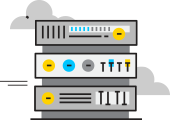Jamming is a technique used to disrupt or interfere with the operation of wireless communication systems by transmitting radio frequency signals on the same frequency, causing interference and rendering the communication ineffective. This intentional interference is often employed for military purposes to neutralize enemy communication systems, but it can also be used in civilian settings for various reasons, such as protest actions, security measures, or even radio broadcasting.
The history of the origin of Jamming and the first mention of it
The concept of jamming dates back to the early 20th century, with the development of radio technology. During World War I, there were instances of radio signals being deliberately interfered with by opposing forces to hinder communication between troops. However, the systematic use of jamming techniques was primarily observed during World War II, where both Axis and Allied forces employed jamming to disrupt enemy communication systems.
Detailed information about Jamming. Expanding the topic Jamming
Jamming is an intentional act where an external entity transmits radio frequency signals that interfere with the legitimate signals transmitted between communication devices. It can be either narrowband, which targets specific frequencies, or broadband, which covers a wide range of frequencies. The effectiveness of jamming depends on various factors, including the power of the jamming signal, the proximity to the targeted communication system, and the complexity of the jamming techniques employed.
The internal structure of the Jamming. How the Jamming works
The internal structure of a jamming system typically involves a transmitter that emits radio frequency signals on the same frequency band as the target communication system. This transmission can be continuous or intermittent, depending on the objectives of the jamming operation. The key principle behind jamming is to overpower or disrupt the legitimate signals, making it difficult for the receiving devices to distinguish between the intended communication and the jamming signals.
Analysis of the key features of Jamming
Key features of jamming include:
-
Frequency Band: Jamming can target specific frequency bands, such as those used for Wi-Fi, cellular communication, or radio broadcasts.
-
Jamming Power: The strength of the jamming signal can determine the extent of interference and its effectiveness.
-
Jamming Techniques: Different techniques can be employed, such as noise jamming, barrage jamming, and spot jamming, each with its own advantages and limitations.
-
Legality: Jamming is strictly regulated in most countries and is usually considered illegal for civilian use due to its potential to disrupt critical communication services.
Types of Jamming
Jamming techniques can be categorized based on their characteristics and objectives. The common types of jamming include:
| Type of Jamming | Description |
|---|---|
| Noise Jamming | Involves sending random noise signals on the target frequency to disrupt communication. |
| Barrage Jamming | Utilizes continuous and high-powered signals over a broad frequency range to overwhelm systems. |
| Spot Jamming | Targets specific communication channels, leaving others unaffected. |
| Deceptive Jamming | Mimics legitimate signals to confuse the receiving devices. |
| Repeater Jamming | Captures and retransmits signals to create interference. |
Jamming can serve various purposes, but it is essential to understand the legal and ethical implications associated with its use. Some common applications include:
-
Military Applications: Jamming plays a critical role in electronic warfare, disrupting enemy communication and radar systems to gain a tactical advantage.
-
Civilian Uses: In certain situations, authorities may use jamming to prevent unauthorized communication within sensitive areas or to control riots and protests.
However, there are several problems related to jamming:
-
Collateral Damage: Jamming can unintentionally disrupt legitimate communication systems, affecting innocent bystanders.
-
Legal Restrictions: Jamming is often prohibited by law due to its potential for widespread interference and harmful consequences.
-
Countermeasures: Advanced communication systems can employ anti-jamming techniques, making it harder to disrupt their operation.
Main characteristics and other comparisons with similar terms
Here’s a comparison of jamming with other similar terms:
| Term | Description |
|---|---|
| Interference | Refers to any unwanted disruption of signals, including both intentional and unintentional disruptions. |
| Hacking | Involves unauthorized access and manipulation of computer systems and networks. It differs from jamming, which focuses on disrupting wireless communication. |
| Encryption | Involves encoding data to protect it from unauthorized access but does not interfere with the transmission itself. |
As technology advances, so do the methods and countermeasures associated with jamming. The future of jamming may include:
-
Sophisticated Techniques: Jamming methods may become more advanced, making it harder to detect and counteract.
-
Artificial Intelligence: AI-powered jamming systems could adapt and optimize interference strategies in real-time.
-
Cognitive Radio: Communication systems that can dynamically switch frequencies to avoid jamming attacks.
How proxy servers can be used or associated with Jamming
Proxy servers can be indirectly associated with jamming when used for evading censorship and accessing blocked content. In regions where certain websites or communication channels are deliberately blocked or jammed by authorities, users can employ proxy servers to bypass these restrictions. By routing their traffic through proxy servers located in different regions, users can access content and communication channels that would otherwise be inaccessible due to jamming or censorship.
Related links
For more information about Jamming, you can refer to the following resources:
In conclusion, jamming is a complex and controversial technique that has historical roots in military warfare but also has potential implications in civilian contexts. While it can be employed for legitimate purposes in certain situations, the potential risks and legal restrictions associated with jamming must be carefully considered. As technology evolves, the future of jamming will undoubtedly present new challenges and opportunities in the realm of wireless communication.




